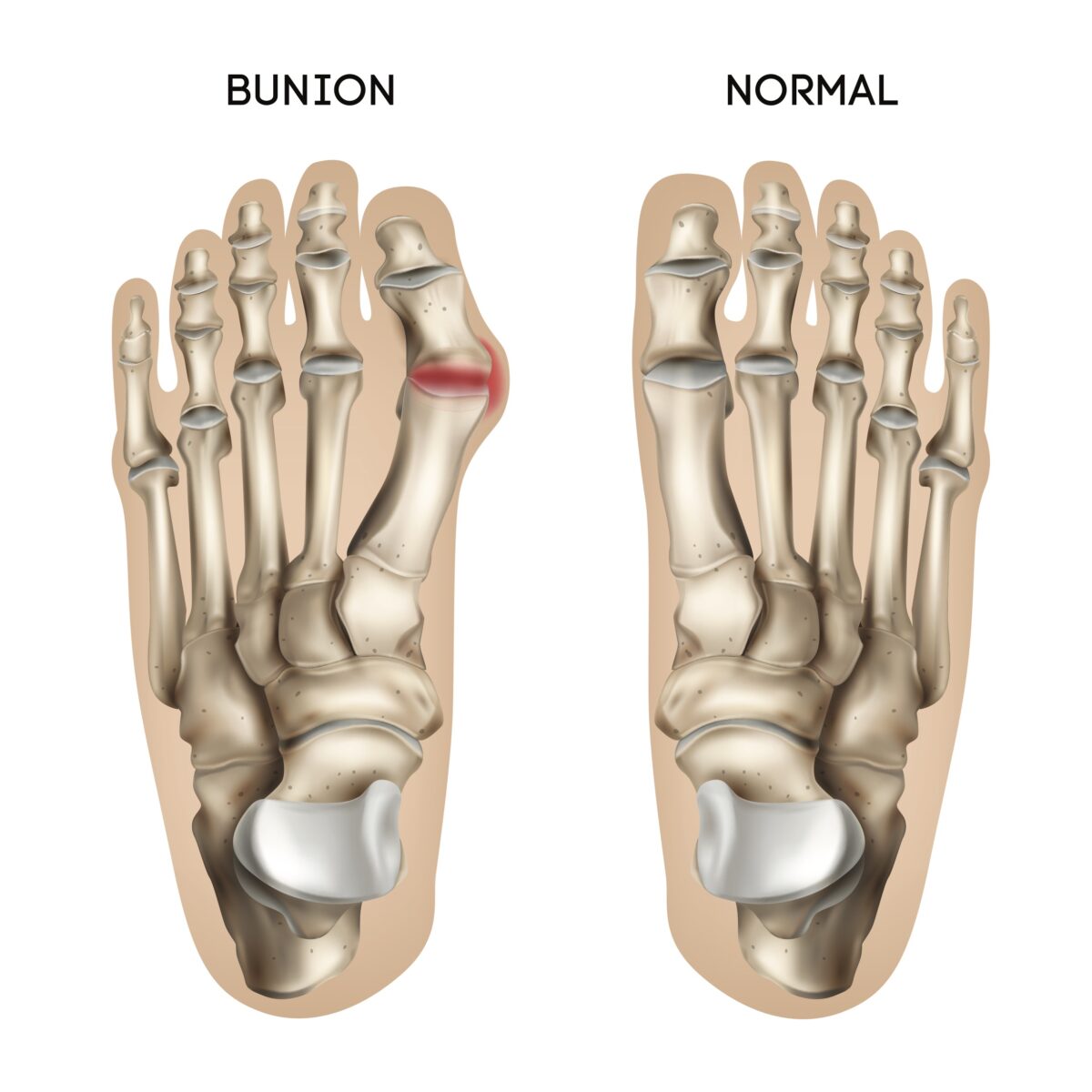Bunions
This article does not constitute as medical advice.
If you are experiencing symptoms of bunions, contact your doctor or make an appointment.
This article does not constitute as medical advice.
If you are experiencing symptoms of bunions, contact your doctor or make an appointment.
A bunion is formed when there is prolonged pressure on the big toe and its base pushes outwards. The big toe may start pointing towards the second toe or even go over it. As the big toe is essential for foot flexion and balance, walking becomes increasingly uncomfortable and painful as the bunion gets larger. This condition can be caused by wearing shoes that are too tight or worsen the condition.
